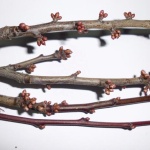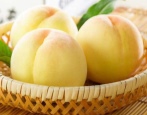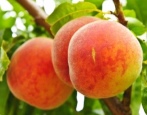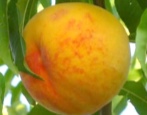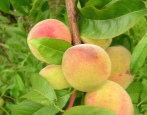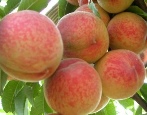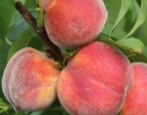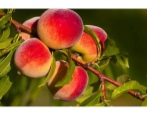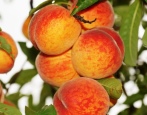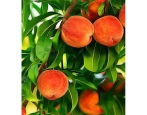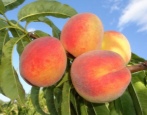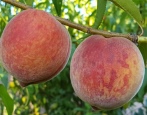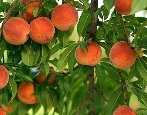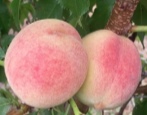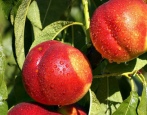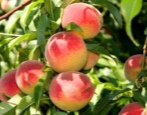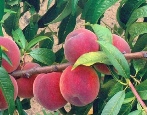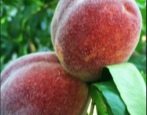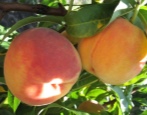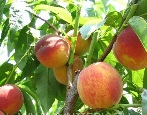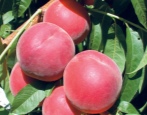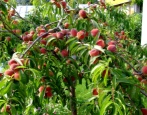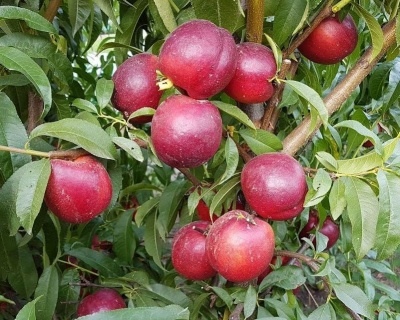
- Authors: American selection
- Name synonyms: Big Top
- Growth type: vigorous
- Ripening period: early
- Self-fertility: self-fertile
- Appointment: for fresh consumption
- Yield: high
- Transportability: good
- Separability of the bone from the pulp: bad
- Winter hardiness: high
Until recently, it was almost impossible to grow nectarine in a summer cottage, especially if there is no experience. With the advent of numerous unpretentious species, growing nectarine has become easy, regardless of climatic conditions. One of the unpretentious varieties is considered to be Big Top.
Breeding history
Big Top is a fruit crop developed by American scientists in 1984, which later became the parent plant for many new varieties. Nectarine is a prominent representative of the American selection of Floyd Seiger. The tree can grow in almost all climatic zones. Big Top nectarine is popular in the central and southern parts of Russia, as well as throughout Ukraine.
Description of the variety
Fruit culture Big Top is a tall tree that grows up to 3-5 meters in height under favorable conditions. It is characterized by a moderately thickened crown with dark green foliage with slightly spreading branches that prefer vertical growth, a powerful trunk and gray-brown shoots. The tree grows pretty quickly. The flowering phase begins in early April, sometimes in late March. The crown of nectarine during this period is sparsely covered with large pink flowers with petals bent upward, emitting a bright aroma.
Fruit characteristics
Big Top belongs to large-fruited varieties. On a healthy tree, fruits gain weight from 150 to 200 grams. The fruit has a rounded shape with a slight flattening on the sides. Ripe nectarine has an unusual uneven color - the orange skin is covered with a cherry-purple blush almost over the entire surface. The abdominal suture in fruits is poorly expressed. The peel of the fruit is thin, but strong, with a pronounced gloss over the entire cover.
The use of fruits is universal - they are eaten fresh, used in cooking, processed and preserved. After harvesting, the fruit is easy to transport and can also be stored for a long time under the right conditions. Fruits soften very slowly.
Taste qualities
The taste and commercial qualities of the American variety are excellent. The yellow-red flesh is characterized by a firm, fleshy, slightly fibrous and crunchy texture with good juiciness. The taste is harmonious - sugary-sweet with hints of honey and subtle sourness. The stone is very difficult to separate from the pulp. Fruit aroma is present - moderate, dessert.
Ripening and fruiting
American nectarine ripens early. The tree bears fruit stably - annually. The peak of fruiting of the culture falls on the last week of July - early August. In the southern regions, nectarine can be tasted as early as mid-July. Ripe fruits hang on the branches for a long time without crumbling.
Yield
Subject to all agrotechnical recommendations, the tree will certainly thank you with a bountiful harvest. On average, up to 30 kg of fruit can be removed from one tree per season.
Self-fertility and the need for pollinators
The variety is self-fertile, therefore it does not need cross-pollination, however, according to experienced gardeners, donor trees planted nearby with the same flowering time can increase yield indicators.
Growing and care
The best period for planting a nectarine seedling is considered early spring - before the buds swell. A distance of 2-2.5 meters must be kept between plantings.
Fruit crop care consists of: watering (2-3 times per season), top dressing (three times per season), sanitary pruning of branches, crown molding, loosening and mulching of the soil, protection from insects. It is better to form the crown in the form of a bowl, which will simplify tree care, harvesting, and also provide access to light and air.
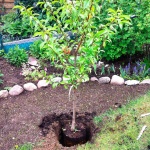
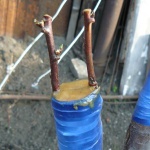
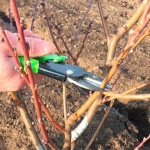
Frost resistance and the need for shelter
Big Top nectarine is frost-resistant - it is able to withstand temperature drops down to -20 ... 25 degrees. For the winter period, the tree must be covered. To do this, deep mulching is carried out, a mound of mulch and soil is formed, which will protect the culture from freezing.
Disease and pest resistance
The variety has high immunity, so the tree is rarely exposed to diseases and pests. It is extremely rare for nectarine to suffer from curly leaves, moniliosis and fruit rot. Of the pests that bother the nectarine tree, it is worth highlighting the scale insect, aphids, flower beetles weevils. Fight against fungus and insects can be carried out by timely treatment with insecticides and fungicides.
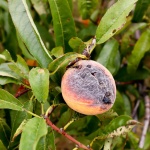
Requirements for soil and climatic conditions
The site for the tree should be chosen even, clean and sunny, since nectarine is a thermophilic culture. Loose, breathable, fertile soil with low acidity will become favorable for the tree. In addition, the tree should be protected from drafts and gusty winds.
